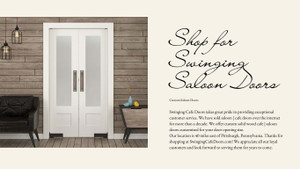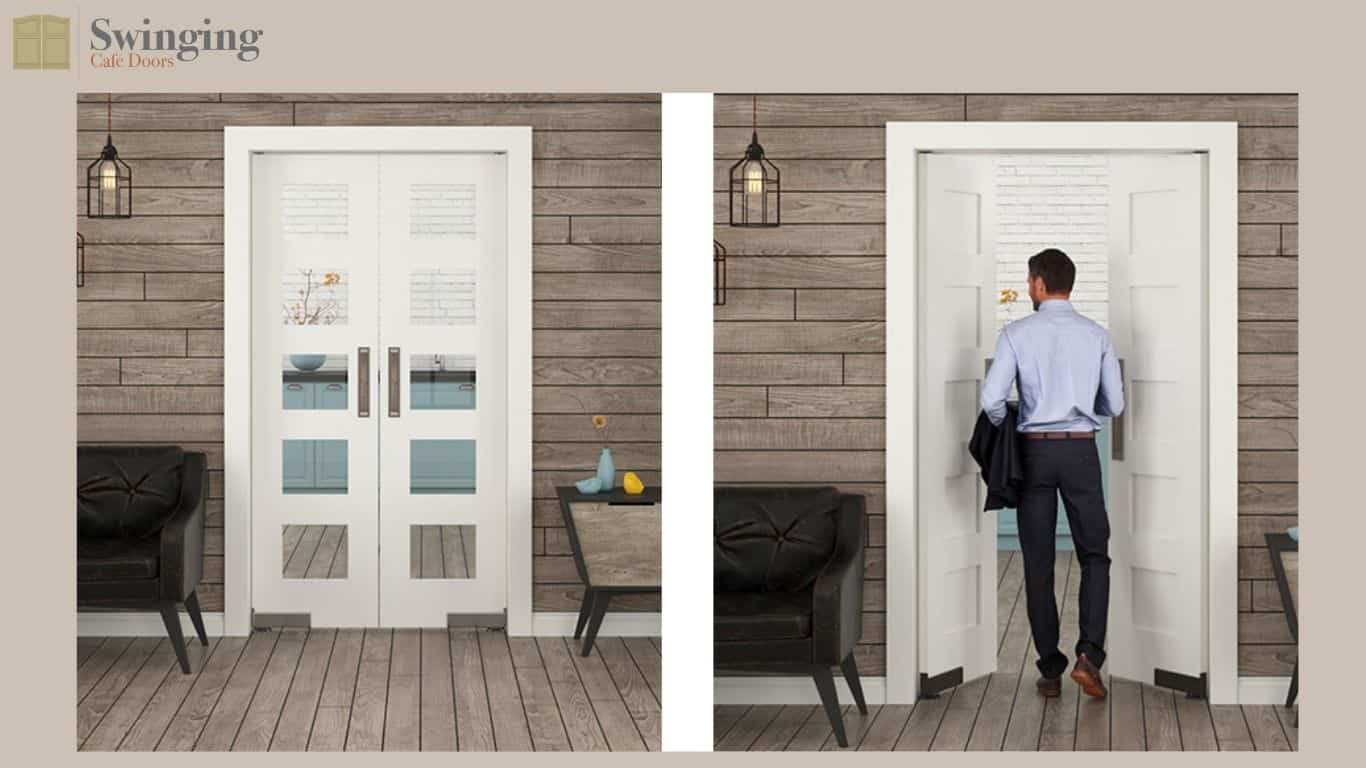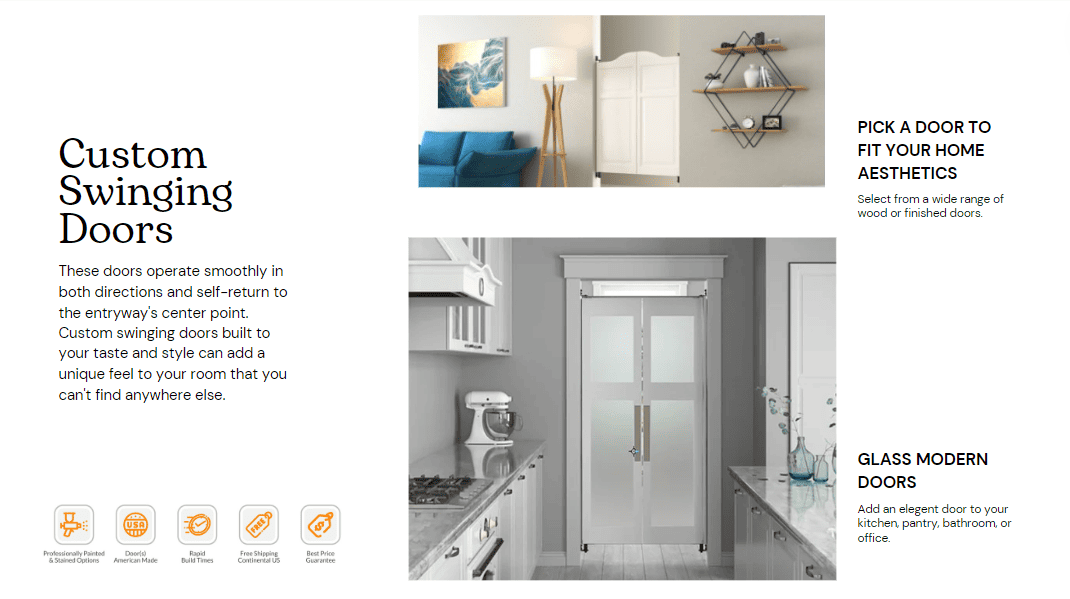
Elevate Your Interior Design with Swinging Doors: Key Considerations
Elevate Your Interior Design with Swinging Doors: Key Considerations
Choosing the right doors in your home is not just about making an entrance – it's a pivotal decision that can significantly impact your interior space, style, and functionality. Among the myriad options available, swinging doors have emerged as a versatile and stylish choice for various home designs. From the classic charm of cafe doors to the modern appeal of industrial designs, swinging doors can transform your living spaces into an aesthetically pleasing and efficient environment. Here are the key factors to consider when selecting swinging doors for your interior design project.
Space Considerations
The space within which your swinging door will operate is a critical starting point. Assessing how much "swing" space your door will need is essential. Will the door open against a wall, kitchen island, or bookshelf? Will it need to clear other pieces of furniture?
1. Interior Size and Layout
Understanding the interior size and layout of the room where you intend to install the swinging door is crucial. Measure the dimensions precisely to ensure the door's swing arc will not be hindered. For narrower spaces, a smaller door with a shortened panel can be a solution. Planning for double swinging doors are a great option for small openings and small spaces.
2. Pivot Points and Wall Clearance
Consider the pivot point of the door and how far the door will swing into a room. This is relevant for both single and double-sided doors. With double doors, make sure you leave enough space for both to open freely without interfering with each other.
3. Integration with Adjacent Areas
How will the swinging door integrate with other rooms? Will it need to swing in both directions or can you optimize the swing based on the neighboring room's layout? Remember, seamless operation enhances the overall user experience.
Aesthetic Preferences

Your swinging doors should not only be functional but complement the visual identity of your home. A well-chosen door can enhance the aesthetics of your interior design, creating a cohesive and stylish space.
1. Style Matching
Select a style that suits your overall home decor theme. Whether it’s a rustic barn door, a minimalist glass door, or an ornate wooden door, each can convey a specific design style. Ensure it complements the room's colors, textures, and materials.
2. Material Selection
The material of your swinging doors matters. Wood conveys warmth and traditional charm, while glass or mirrored surfaces can make a space feel larger. Metal doors are often chosen for their sleek, industrial feel. Choose materials that echo the rest of your interiors for a harmonious look.
3. Hardware and Accessories
Do not overlook the hardware of your swinging door, as it can be a statement piece. From handles and hinges to locks and close mechanisms, select hardware that blends with your design while providing the desired level of functionality and security.
Functionality and Traffic Flow
Interior doors are not just static design elements; they serve a functional purpose in managing traffic flow and privacy within your home.
1. Usage and Durability
Consider the heavy-duty nature of your swinging door if it is to be placed in a high-traffic area. Will it be used for regular passage, or to cordon off a less-accessed room? Opt for sturdy, long-lasting construction that can withstand the use it will receive.
2. Sound and Light Control
Doors play a role in managing sound and light within a space. If soundproofing is a priority, select doors with solid cores. For rooms that need to share light, you might choose doors with opaque glass or clear panels.
3. Privacy and Segregation
If creating divided spaces is important, swinging doors that reach the floor can offer more privacy. Consider the height of the door and whether it will meet your privacy needs when closed.
Budget Constraints
While swinging doors can be a statement piece, they should not break the bank. Establishing a clear budget will guide your choices and prevent overspending.
1. Upfront Costs
Swinging doors come in a wide price range depending on the material, brand, and features. Research the typical costs for the type of door you want and factor in installation expenses.
2. Long-term Investment
When considering your budget, think about the long-term value of the investment. Quality doors may cost more initially but can save on replacement and repair costs down the road.
3. Alternative Solutions
If you find that traditional swinging doors are too expensive, consider alternatives like pocket doors or sliding doors which can offer similar functionality and style at a different price point.
By carefully considering these factors, you can select swinging doors that not only meet your practical needs but also add significant aesthetic value to your home's interior design. Remember, the choices you make for your doors contribute to the overall character and functionality of your living spaces, making them a decision worth thoughtful consideration.

